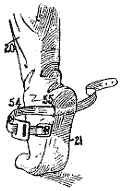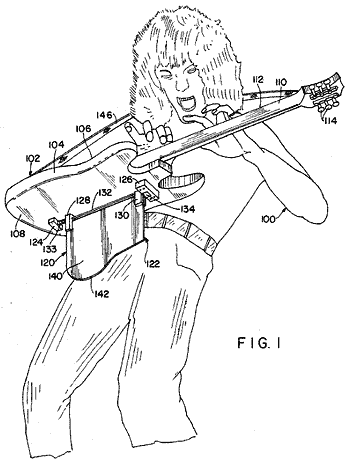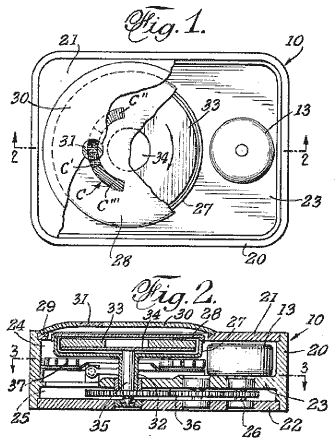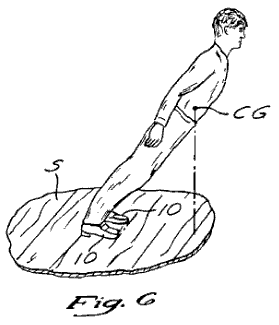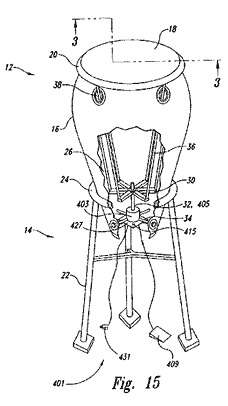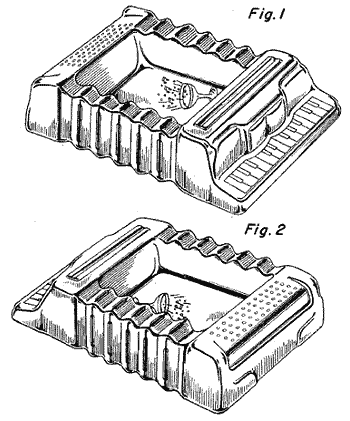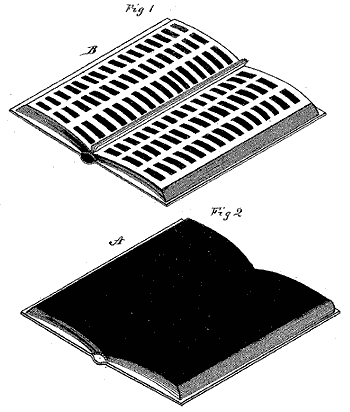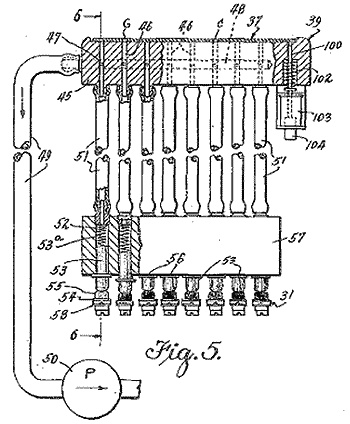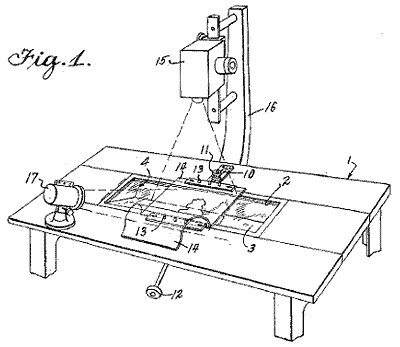Robert P. Crease, a member of the philosophy department at the State University of New York at Stony Brook and the historian at Brookhaven National Laboratory, recently asked physicists to nominate the most beautiful experiment of all time. Based on the paper of George Johnson in The New York Times we list below 10 winners of this polling and accompany the short explanations of the physical experiments with computer animations.
1. Double-slit electron diffraction
The French physicist Louis de Broglie proposed in 1924 that electrons and other discrete bits of matter, which until then had been conceived only as material particles, also have wave properties such as wavelength and frequency. Later (1927) the wave nature of electrons was experimentally established by C.J. Davisson and L.H. Germer in New York and by G.P. Thomson in Aberdeen, Scot.
To explain the idea, to others and themselves, physicists often used a thought experiment, in which Young's double-slit demonstration is repeated with a beam of electrons instead of light. Obeying the laws of quantum mechanics, the stream of particles would split in two, and the smaller streams would interfere with each other, leaving the same kind of light- and dark-striped pattern as was cast by light. Particles would act like waves. According to an accompanying article in Physics World, by the magazine's editor, Peter Rodgers, it wasn't until 1961 that someone (Claus Jönsson of Tübingen) carried out the experiment in the real world.
2. Galileo's experiment on falling objects
In the late 1500's, everyone knew that heavy objects fall faster than lighter ones. After all, Aristotle had said so. That an ancient Greek scholar still held such sway was a sign of how far science had declined during the dark ages.
Galileo Galilei, who held a chair in mathematics at the University of Pisa, was impudent enough to question the common knowledge. The story has become part of the folklore of science: he is reputed to have dropped two different weights from the town's Leaning Tower showing that they landed at the same time. His challenges to Aristotle may have cost Galileo his job, but he had demonstrated the importance of taking nature, not human authority, as the final arbiter in matters of science.
3. Millikan's oil-drop experiment
Oil-drop experiment was the first direct and compelling measurement of the electric charge of a single electron. It was performed originally in 1909 by the American physicist Robert A. Millikan. Using a perfume atomizer, he sprayed tiny drops of oil into a transparent chamber. At the top and bottom were metal plates hooked to a battery, making one positive (red in animation) and the other negative (blue in animation). Since each droplet picked up a slight charge of static electricity as it traveled through the air, the speed of its motion could be controlled by altering the voltage on the plates. When the space between the metal plates is ionized by radiation (e.g., X rays), electrons from the air attach themselves to oil droplets, causing them to acquire a negative charge. Millikan observed one drop after another, varying the voltage and noting the effect. After many repetitions he concluded that charge could only assume certain fixed values. The smallest of these portions was none other than the charge of a single electron.
4. Newton's decomposition of sunlight with a prism
Isaac Newton was born the year Galileo died. He graduated from Trinity College, Cambridge, in 1665, then holed up at home for a couple of years waiting out the plague. He had no trouble keeping himself occupied.
The common wisdom held that white light is the purest form (Aristotle again) and that colored light must therefore have been altered somehow. To test this hypothesis, Newton shined a beam of sunlight through a glass prism and showed that it decomposed into a spectrum cast on the wall. People already knew about rainbows, of course, but they were considered to be little more than pretty aberrations. Actually, Newton concluded, it was these colors — red, orange, yellow, green, blue, indigo, violet and the gradations in between — that were fundamental. What seemed simple on the surface, a beam of white light, was, if one looked deeper, beautifully complex.
5. Young's light-interference experiment
Newton wasn't always right. Through various arguments, he had moved the scientific mainstream toward the conviction that light consists exclusively of particles rather than waves. In 1803, Thomas Young, an English physician and physicist, put the idea to a test. He cut a hole in a window shutter, covered it with a thick piece of paper punctured with a tiny pinhole and used a mirror to divert the thin beam that came shining through. Then he took "a slip of a card, about one-thirtieth of an inch in breadth" and held it edgewise in the path of the beam, dividing it in two. The result was a shadow of alternating light and dark bands — a phenomenon that could be explained if the two beams were interacting like waves. Bright bands appeared where two crests overlapped, reinforcing each other; dark bands marked where a crest lined up with a trough, neutralizing each other.
The demonstration was often repeated over the years using a card with two holes to divide the beam. These so-called double-slit experiments became the standard for determining wavelike motion — a fact that was to become especially important a century later when quantum theory began.
6. Cavendish's torsion-bar experiment
The experiment was performed in 1797–98 by the English scientist Henry Cavendish. He followed a method prescribed and used apparatus built by his countryman, the geologist John Michell, who had died in 1793. The apparatus employed was a torsion balance, essentially a stretched wire supporting spherical weights. Attraction between pairs of weights caused the wire to twist slightly, which thus allowed the first calculation of the value of the gravitational constant G. The experiment was popularly known as weighing the Earth because determination of G permitted calculation of the Earth's mass.
7. Eratosthenes' measurement of the Earth's circumference
At Syene (now Aswan), some 800 km (500 miles) southeast of Alexandria in Egypt, the Sun's rays fall vertically at noon at the summer solstice. Eratosthenes, who was born in c. 276 BC, noted that at Alexandria, at the same date and time, sunlight fell at an angle of about 7° from the vertical. He correctly assumed the Sun's distance to be very great; its rays therefore are practically parallel when they reach the Earth. Given estimates of the distance between the two cities, he was able to calculate the circumference of the Earth. The exact length of the units (stadia) he used is doubtful, and the accuracy of his result is therefore uncertain; it may have varied by 0.5 to 17 percent from the value accepted by modern astronomers.
8. Galileo's experiments with rolling balls down inclined planes
Galileo continued to refine his ideas about objects in motion. He took a board 12 cubits long and half a cubit wide (about 20 feet by 10 inches) and cut a groove, as straight and smooth as possible, down the center. He inclined the plane and rolled brass balls down it, timing their descent with a water clock — a large vessel that emptied through a thin tube into a glass. After each run he would weigh the water that had flowed out — his measurement of elapsed time — and compare it with the distance the ball had traveled.
Aristotle would have predicted that the velocity of a rolling ball was constant: double its time in transit and you would double the distance it traversed. Galileo was able to show that the distance is actually proportional to the square of the time: Double it and the ball would go four times as far. The reason is that it is being constantly accelerated by gravity.
9. Rutherford's discovery of the nucleus
When Ernest Rutherford was experimenting with radioactivity at the University of Manchester in 1911, atoms were generally believed to consist of large mushy blobs of positive electrical charge with electrons embedded inside — the "plum pudding" model. But when he and his assistants fired tiny positively charged projectiles, called alpha particles, at a thin foil of gold, they were surprised that a tiny percentage of them came bouncing back. It was as though bullets had ricocheted off Jell-O. Rutherford calculated that actually atoms were not so mushy after all. Most of the mass must be concentrated in a tiny core, now called the nucleus, with the electrons hovering around it. With amendments from quantum theory, this image of the atom persists today.
10. Foucault's pendulum
Last year when scientists mounted a pendulum above the South Pole and watched it swing, they were replicating a celebrated demonstration performed in Paris in 1851. Using a steel wire 220 feet long, the French scientist Jean-Bernard-Léon Foucault suspended a 62-pound iron ball from the dome of the Panthéon and set it in motion, rocking back and forth. To mark its progress he attached a stylus to the ball and placed a ring of damp sand on the floor below.
The audience watched in awe as the pendulum inexplicably appeared to rotate, leaving a slightly different trace with each swing. Actually it was the floor of the Panthéon that was slowly moving, and Foucault had shown, more convincingly than ever, that the earth revolves on its axis. At the latitude of Paris, the pendulum's path would complete a full clockwise rotation every 30 hours; on the Southern Hemisphere it would rotate counterclockwise, and on the Equator it wouldn't revolve at all. At the South Pole, as the modern-day scientists confirmed, the period of rotation is 24 hours.
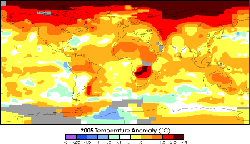

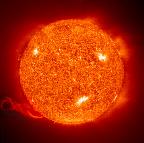 Solar irradiance changes have been measured reliably by satellites for only 30 years. These precise observations show changes of a few tenths of a percent that depend on the level of activity in the 11-year solar cycle. Changes over longer periods must be inferred from other sources. Estimates of earlier variations are important for calibrating the climate models. While a component of recent global warming may have been caused by the increased solar activity of the last solar cycle, that component was very small compared to the effects of additional greenhouse gases. According to a NASA Goddard Institute for Space Studies (GISS)
Solar irradiance changes have been measured reliably by satellites for only 30 years. These precise observations show changes of a few tenths of a percent that depend on the level of activity in the 11-year solar cycle. Changes over longer periods must be inferred from other sources. Estimates of earlier variations are important for calibrating the climate models. While a component of recent global warming may have been caused by the increased solar activity of the last solar cycle, that component was very small compared to the effects of additional greenhouse gases. According to a NASA Goddard Institute for Space Studies (GISS) 